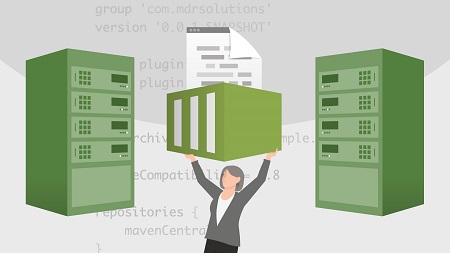
English | MP4 | AVC 1280×720 | AAC 48KHz 2ch | 2h 52m | 740 MB
Choose the right server for your Java EE application and learn the pros and cons of some of the most popular options. In this course, instructor Michael Rogers compares and contrasts the top four: Apache Tomcat, Oracle WebLogic, WildFly, and Payara, an app server derived from Glassfish. Learn how to install each solution, deploy your WAR files, prepare and add database drivers, and configure clustering for Java EE apps that run in containers. Michael also helps you troubleshoot your migration and avoid common pitfalls encountered when deploying JDBC libraries that are not fully supported on your server. By the end of the training, you’ll have the knowledge necessary to select the application server that fits the needs of you and your organization.
Topics include:
- Installing Tomcat
- Adding database drivers in Tomcat
- Tomcat clustering
- Installing WebLogic
- Deploying WAR files in WebLogic
- WebLogic clustering
- Installing WildFly
- Standalone vs. domain-mode clustering in WildFly
- Installing Payara
- Remote instance clustering in Payara
Table of Contents
1 Configure application servers with Java EE
2 Install the database
3 Tomcat and TomEE differences
4 Install and set up Tomcat
5 Tomcat web console
6 Deploy WAR files in Tomcat
7 Add database drivers in Tomcat
8 Address missing JEE capabilities
9 Tomcat clustering
10 Pros and cons of Tomcat and TomEE
11 WebLogic overview
12 Install and set up WebLogic
13 WebLogic web console
14 Deploy WAR files in WebLogic
15 Identify MySQL issue
16 Prepare MySQL driver
17 Test the MySQL data source
18 WebLogic clustering and configuration
19 WebLogic pros and cons
20 JBoss versus WildFly
21 Install and set up WildFly
22 WildFly web console
23 Deploy WAR files in WildFly
24 Add database drivers in WildFly
25 Deploy datasource to domain
26 Pitfalls of standalone clustering
27 Domain mode clustering in WildFly
28 WildFly pros and cons
29 Payara versus GlassFish
30 Install and configure Payara
31 Payara web console
32 Deploy WAR files in Payara
33 Payara database configurations
34 Payara clusters
35 Prepare a remote instance
36 Configure the remote instance
37 Payara pros and cons
38 Next steps
Resolve the captcha to access the links!